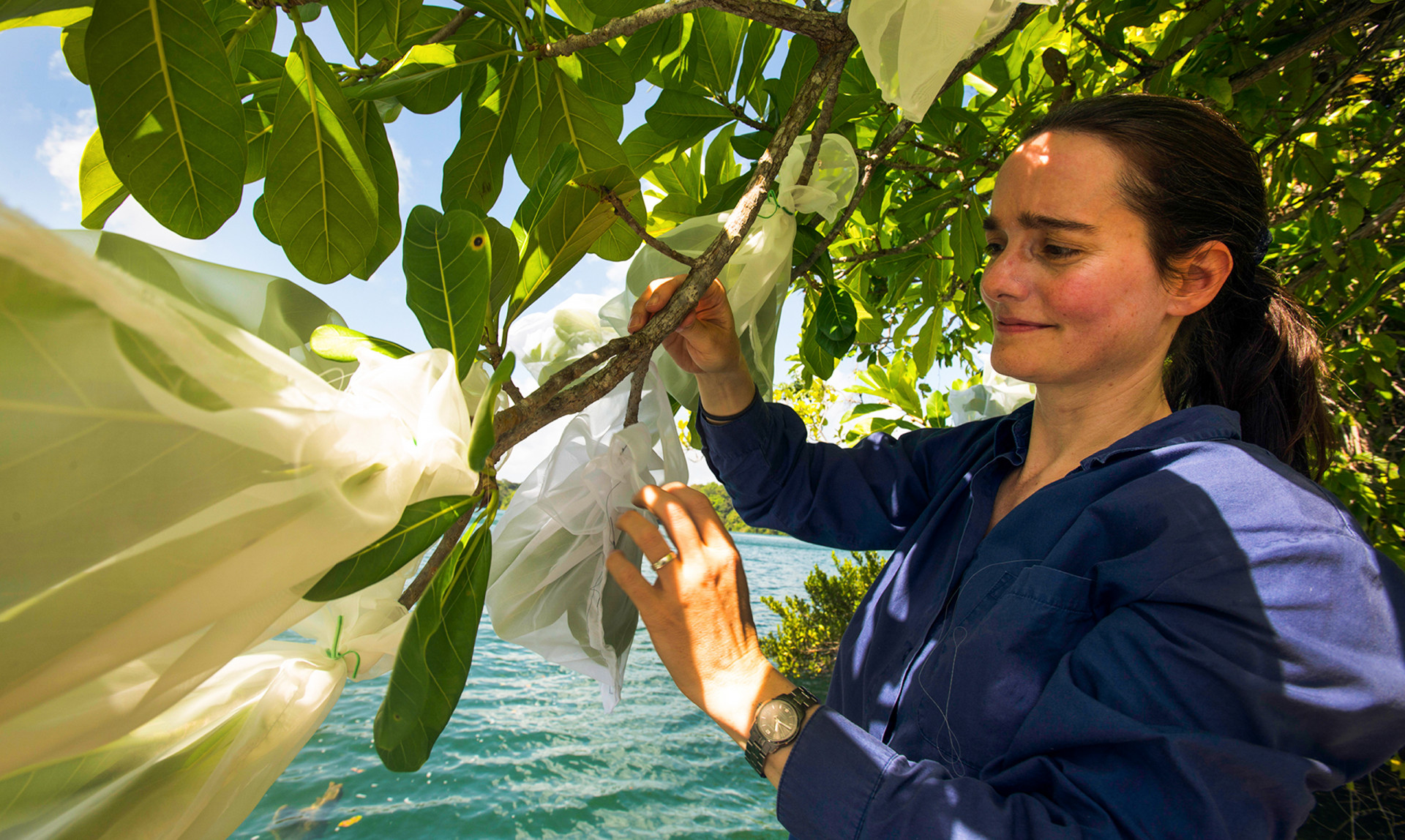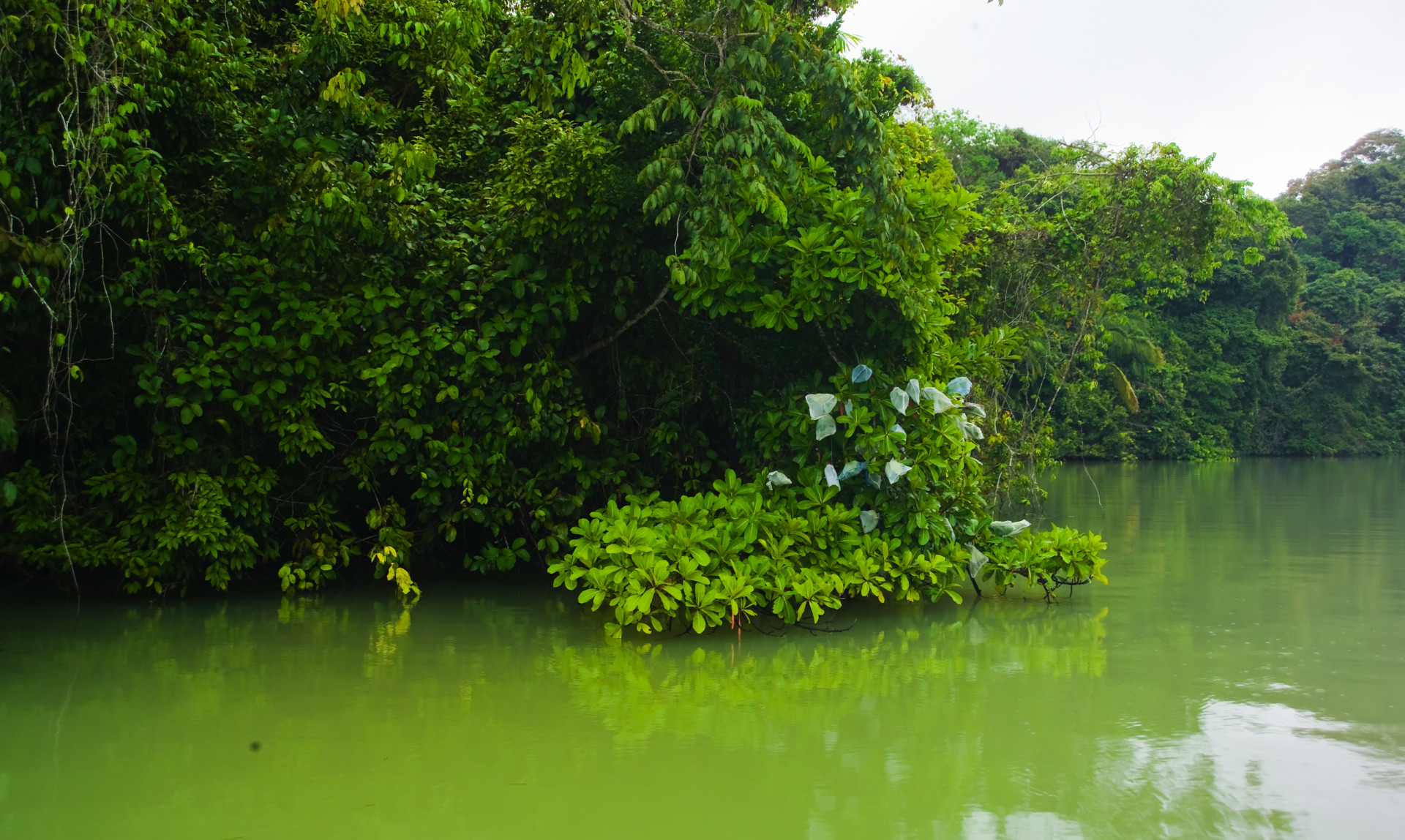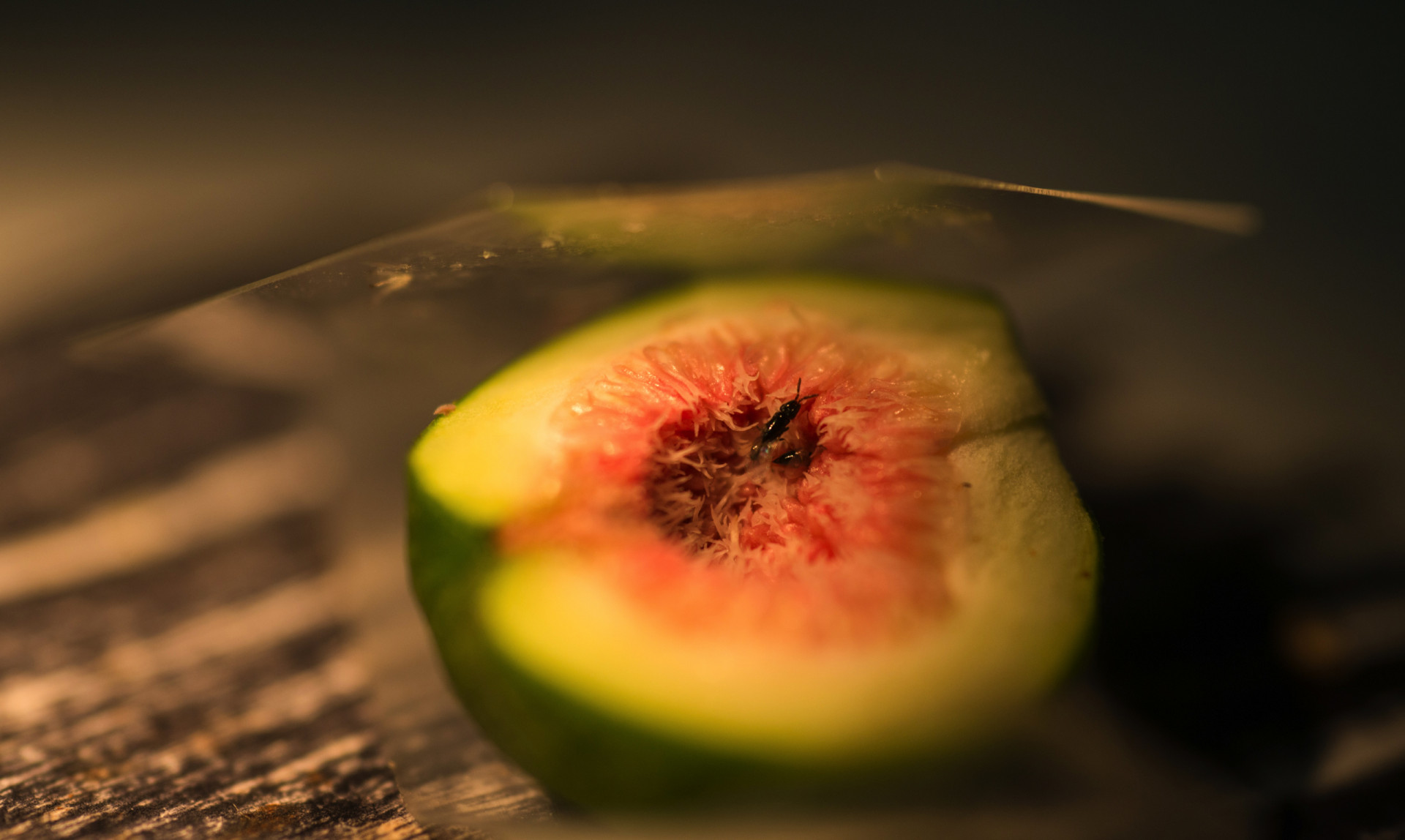Profile:
Charlotte
Jandér
How do fig trees punish cheaters?
Barro Colorado Nature Monument, Panama
The tiny female fig wasp carries a huge burden but cutting corners may not be worth the risk.
The burden of some female fig wasps is greatly disproportionate to their size. Hatched in the lightless interior of a fig fruit, they must collect pollen, find exit holes — created by wingless males that may be both their mates and brothers — and fly their cargo of pollen and eggs to a fig tree of the same species, often kilometers away.
If they make it — not surprisingly, perhaps only one percent does — the wasp, which is typically smaller than a grain of rice, must then enter the fig inflorescence, pollinate and lay eggs, all within a two-day lifespan. Little wonder some cut corners, like not pollinating the host fig.
Fig trees that rely on wasps to actively pollinate them don’t tolerate cheaters well. Sanctions, or punishment, vary. In the most extreme cases, some trees abort unpollinated fruit and no cheater wasp offspring mature. Trees that don’t abort still limit a cheater’s number of descendants when compared to wasps that pollinate.
Charlotte Jandér, a visiting scientist from Yale, described these sanctions in 2010 in Proceedings of the Royal Society with STRI scientist Allen Herre. Back in Panama for a new three-year project, Jandér will study why sanction strength varies across species. “I’m trying to figure out what causes the differences and what the mechanisms are behind them,” she said.



